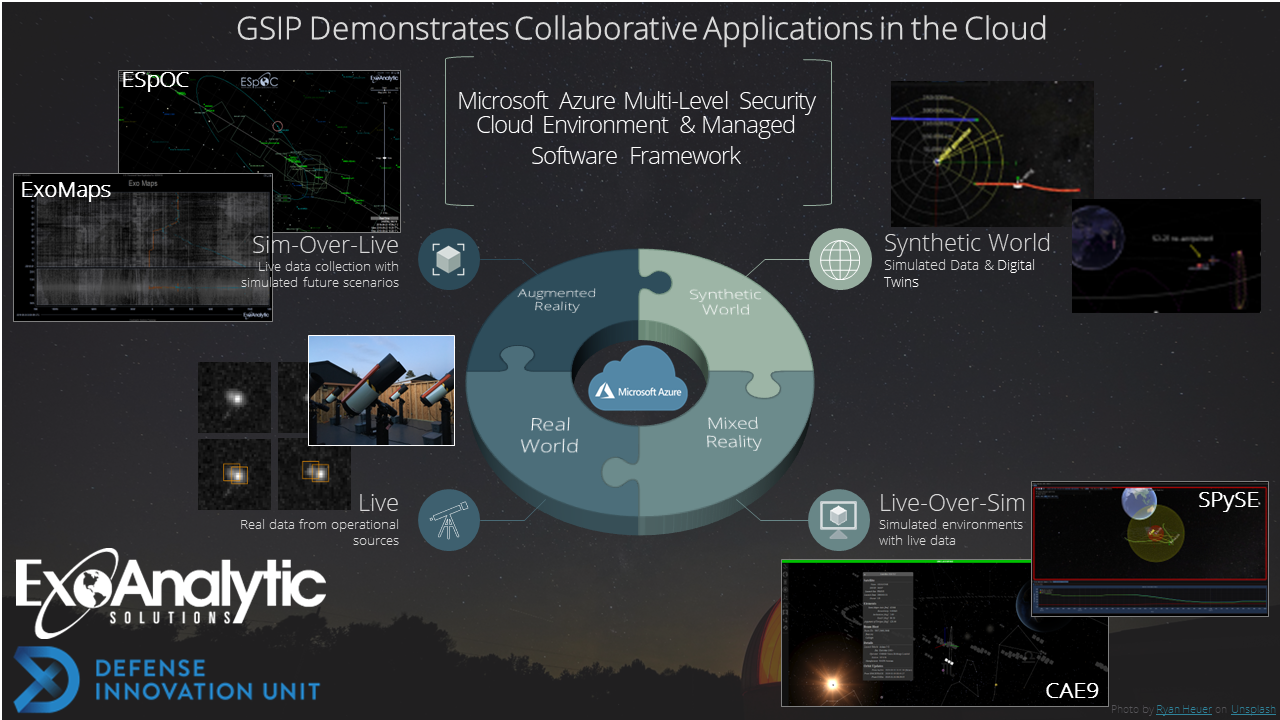July 19, 2022 (Mountain View, CA)—The U.S. government employs an array of software visualization tools across multiple space domain awareness (SDA) mission areas. These tools, which support catalog maintenance, orbit modeling, and projection assessments, are effective but are not always able to incorporate the latest technology that industry readily adopts. Improved automation, by way of artificial intelligence and machine learning (AI/ML), would reduce operator-intensive tool processing time and errors, enabling individual operators to focus on decision-making and strategy. In addition, government visualization and analysis tools are not easily shared beyond U.S. borders, which relegates international partnering and collaboration to a “desired” status rather than reality.

Tibco's user interface leveraging their platform called DEEP-Sight (Data Exploitation and Enhanced Processing).
(Left Image) Tibco's user interface leveraging their platform called DEEP-Sight (Data Exploitation and Enhanced Processing).
To address these and other issues facing space operators, the Defense Innovation Unit’s (DIU) Global Space Innovation Project (GSIP) is prototyping two platforms for data visualization and analytics. These systems, currently under development by Tibco and ExoAnalytic, will augment the suite of government tools currently in use and enhance the SDA missions they support.
One of the top objectives of GSIP is to leverage AI/ML to gather, analyze, and visualize a global network of commercial and government, ground- and space-based sensors’ data. Another key priority of this project incorporates an open framework architecture to allow third-party capability development. These architectures are not limited to U.S. industry and GSIP will involve vendors from key U.S.-allied nations.
“Software iterates and advances so quickly that traditional DoD acquisition strategies can’t keep up. Add to this the necessary but stringent security requirements, it could be years before operators get to use new capabilities. GSIP takes advantage of DIU’s Commercial Solutions Opening to rapidly prototype software applications in a real-world, unclassified environment in months, not years. Thus, leading to faster decision-making for interested DoD and other government organizations on whether or not to adopt and progress the technology to the next stage,” said, DIU Space Portfolio Program Manager, Nate Gapp. “The companies receive constant user-feedback on their systems, allowing for better and faster iteration to adapt their commercial technology for military use.”
Incorporating commercial data and services, GSIP provides the DoD with needed improvements to the accuracy and timing of the military’s aging space tracking system. This will enable the DoD to process the data in new and interesting ways for those end-users and decision makers in the field, as well as to those in Operations Centers.
“Industry is always coming up with great ideas, and that diversity of thought and approach is a strength of America and our allies,” continued Nate Gapp. “By keeping these architectures open to those bold, new ideas, both from within and outside our borders, the United States is able to keep its technological edge.”
Upon demonstration and evaluation of each prototype, the U.S. and allied governments along with the commercial sector will have software applications and platforms available for purchase. DIU is working with the Joint Task Force-Space Defense (JTF-SD) Commercial Operations cell (JCO) to demonstrate these capabilities in the upcoming Sprint Advanced Concept Training (SACT) series held in August with final demo in November.

ExoAnalytic’s Open Operations Rapid Technology for Data Visualization (OORT-DV) prototype framework built on the Common Analysis Engine (CAE9), which will host a series of commercially-developed Service Oriented Architecture (SOA) applications.
(Left Image) ExoAnalytic’s Open Operations Rapid Technology for Data Visualization (OORT-DV) prototype framework built on the Common Analysis Engine (CAE9), which will host a series of commercially-developed Service Oriented Architecture (SOA) applications.